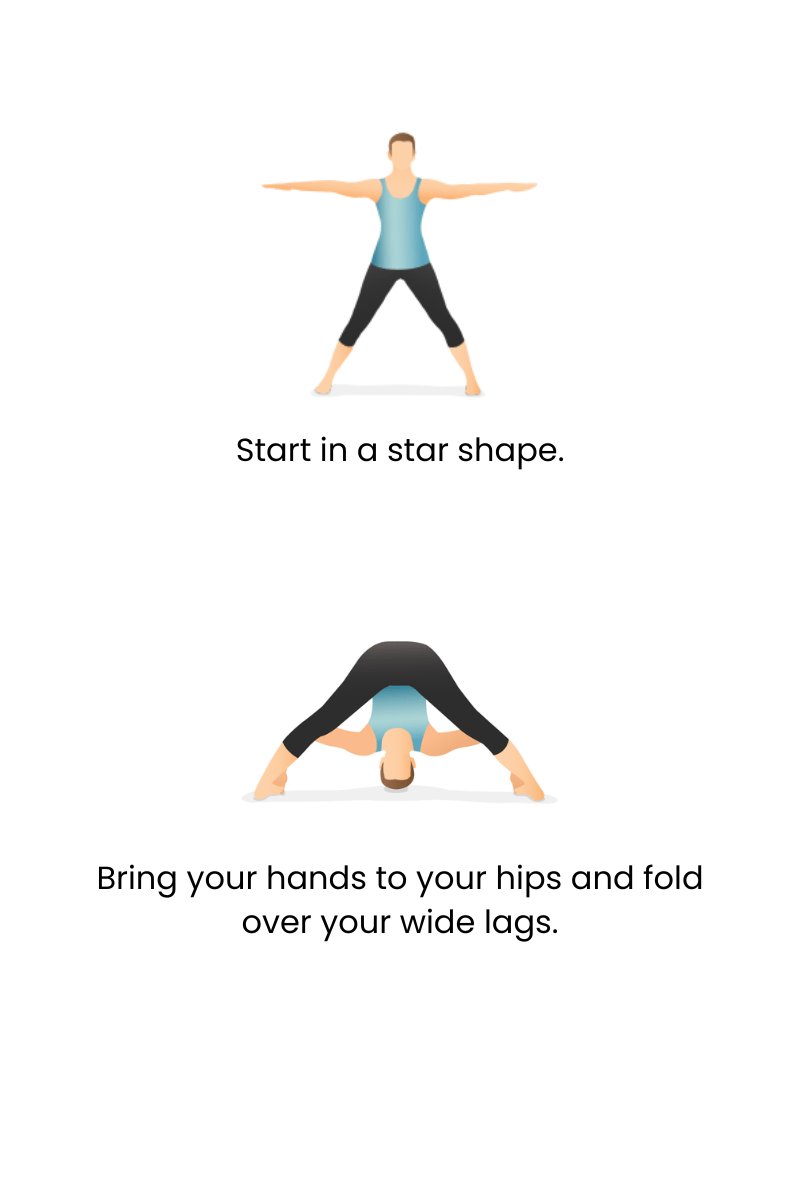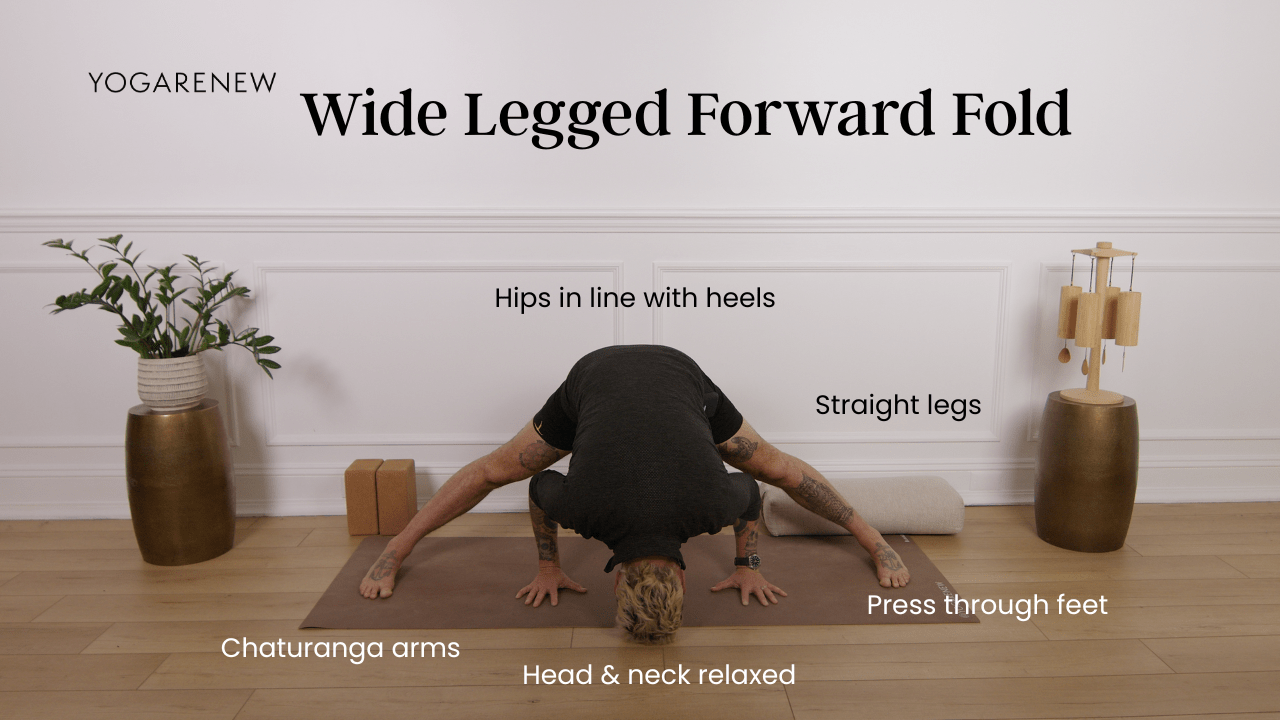What is Prasarita Padottanasana?
English Name: Wide-Legged Forward Fold
Sanskrit Name: Prasarita Padottanasana (pronounced prah-SAR-ee-tah pah-doh-tahn-AHS-uh-nuh)
Category: Standing, Forward Fold, Inversion, Beginner to Intermediate

English Name: Wide-Legged Forward Fold
Sanskrit Name: Prasarita Padottanasana (pronounced prah-SAR-ee-tah pah-doh-tahn-AHS-uh-nuh)
Category: Standing, Forward Fold, Inversion, Beginner to Intermediate
Prasarita Padottanasana, or Wide-Legged Forward Fold, is a grounding standing pose that stretches the entire backside of the body while calming the nervous system. With legs wide and spine extending forward and down, this pose offers a spacious release in the hamstrings, back, and neck.
Often used as a transition, preparation for inversions, or a restorative fold, this posture appears across many yoga styles—from Vinyasa and Hatha to Yin. Its simplicity hides its depth, offering a moment of introspection and lengthening for all levels of practice.


Keep legs active and kneecaps lifted to protect the hamstrings
Distribute weight evenly across the feet—avoid sinking into heels
Keep the spine long as you fold—avoid rounding early in the descent
Engage the core for support and balance
Feet should be slightly turned inward, not perfectly parallel
“Hinge at the hips, not the waist.”
“Lift the sit bones as the crown of the head lowers.”
“Engage your thighs to deepen the stretch safely.”
“Let your breath soften the spine and neck.”
“Imagine pouring your upper body down like water.”
Wide-Legged Forward Fold is a spacious, meditative pose that encourages surrender and introspection. It offers a blend of grounding and release—stretching the legs and spine while calming the mind. Whether used as a transition, a hamstring opener, or a moment of stillness in a flow, this pose supports flexibility, balance, and mental clarity.
A general rule is about one leg-length apart. Adjust for comfort and stability.
Yes! A soft bend can help protect your hamstrings and low back.
Use yoga blocks or keep hands on your hips or thighs while maintaining a long spine.
Your New Favorite Yoga App. For Free.